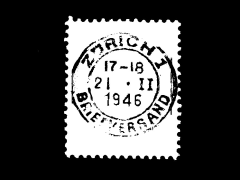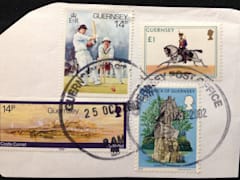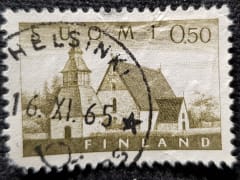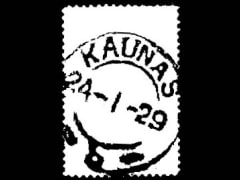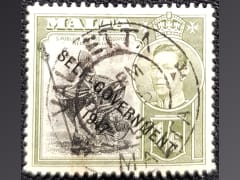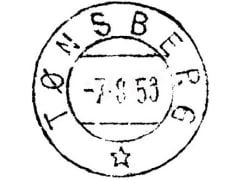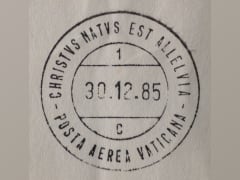CountryAustria
Austria
Town
Eisenstadt
Cacellation Date
Town Info
Eisenstadt is a small Austrian city and the capital of Burgenland. The grand Esterházy Palace, with its sprawling landscaped gardens, dominates the city center. The palace features treasures collected by the Esterházy dynasty and the interactive Haydn Explosive exhibition, which brings the work of composer Joseph Haydn to life. The Haydnsaal concert hall has lavish frescoes and hosts classical music performances.
Location
Black Page 12

Austria
Town
Gmunden
Cacellation Date
3 May 1962
Town Info
Gmunden is a town in Upper Austria, Austria in the district of Gmunden. It has 13,204 inhabitants. It is much frequented as a health and summer resort, and has a variety of lake, brine, vegetable and pine-cone baths, a hydropathic establishment, inhalation chambers, whey cure, etc.
Location
Black Page 12
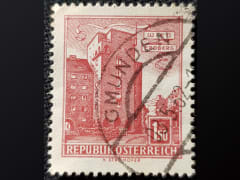
Austria
Town
Graz
Cacellation Date
18 Mar 1971
Town Info
Graz is the capital city of the southern Austrian province of Styria. At its heart is Hauptplatz, the medieval old town’s main square. Shops and restaurants line the narrow surrounding streets, which blend Renaissance and baroque architecture. A funicular leads up Schlossberg, the town hill, to the Uhrturm, a centuries-old clock tower. Across the River Mur, futuristic Kunsthaus Graz exhibits contemporary art.
Location
Collection
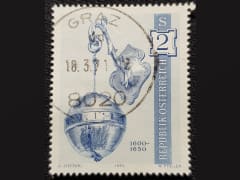
Austria
Town
Kitzbuhel
Cacellation Date
Town Info
Kitzbühel is a small Alpine town east of Innsbruck, in the western Austrian province of Tyrol. It's a fashionable winter resort, known for the annual Hahnenkamm downhill race. Upscale shops and cafes line the streets of its medieval center. Museum Kitzbühel chronicles the history of the town and the area’s winter sports, with paintings by local artist Alfons Walde. Its rooftop terrace has sweeping town views.
Location
Black Page 12
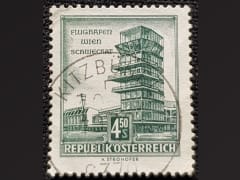
Austria
Town
Klagenfurt
Cacellation Date
Town Info
Klagenfurt, on the eastern shore of Lake Wörthersee, is the capital city of the southern Austrian province of Carinthia. Its emblem is the Lindwurm, a winged dragon, of which there is a fountain on the main square, Neuer Platz. Nearby, frescoes and reliefs adorn the opulent 1500s cathedral. Baroque and Renaissance buildings line the narrow streets around Alter Platz, with its yellow 17th-century Old Town Hall.
Location
Black Page 12
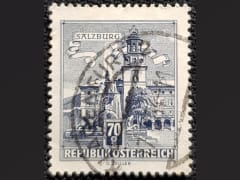
Austria
Town
Krimml
Cacellation Date
10 Jun 1977
Town Info
Krimml is a municipality in Zell am See District, in the federal state of Salzburg, Austria, in the Pinzgau region.
Location
Black Page 12
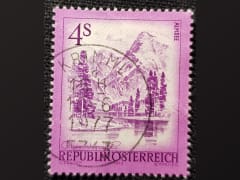
Austria
Town
Kufstein
Cacellation Date
16 Dec 1979
Town Info
Kufstein is a town in the western Austrian province of Tyrol. The medieval Kufstein Fortress, accessible by funicular or steep path, has views of the Lower Inn Valley and the Alps. It is also home to a local history museum and the huge, open-air Heroes Organ. Narrow streets like Römerhofgasse are lined with traditional Tyrolean houses. The Riedel Glass factory has been family-run since 1756.
Location
Black Page 12
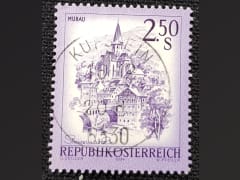
Austria
Town
Mayrhofen
Cacellation Date
30 Jul 1984
Town Info
Mayrhofen is a town in the Zillertal Valley, in the west Austrian province of Tyrol. It’s known for its ski areas. Lifts provide access to the slopes of Ahorn Mountain to the south. To the west, Penken Mountain includes the steep piste known as the “Harakiri.” Trails lead to the Gasthof Zimmereben hut, with views of the valley and Ahorn. The Ahorn Eagle’s Stage is an observation point for alpine birds of prey.
Location
Black Page 12
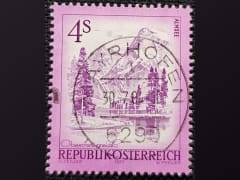
Austria
Town
Mondsee
Cacellation Date
Aug 1999
Town Info
Mondsee is a town in the Vöcklabruck district in the Austrian state of Upper Austria located on the shore of the lake Mondsee. The town is home to the historic medieval Mondsee Abbey. The cloister church was used for the site of the wedding in The Sound of Music.
Location
Collection
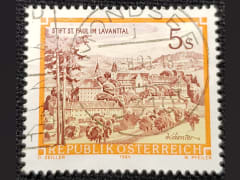
Austria
Town
Mureck
Cacellation Date
Town Info
Mureck (Slovene: Cmurek, archaic: Cmürek[3]) is a municipality in the district of Südoststeiermark in the Austrian state of Styria. On 1 January 2015, administrative reform actions in Styria merged the towns of Mureck, Gosdorf, and Eichfeld, which includes the villages of Hainsdorf-Brunnsee and Oberrakitsch. The new municipality is called Mureck.
Location
Black Page 12
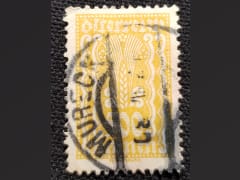
Austria
Town
Oserwart
Cacellation Date
29 Nov 1924
Town Info
Oberwart is a town in Burgenland in southeast Austria on the banks of the Pinka River, and the capital of the district of the same name. Oberwart is the cultural capital of the small ethnic Hungarian minority in Burgenland, living in the Upper Őrség or Wart microregion.
Location
Black Page 12
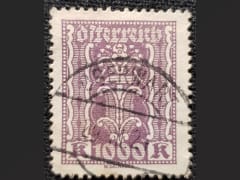
Austria
Town
Salzburg
Cacellation Date
8 Feb 1980
Town Info
Salzburg is an Austrian city on the border of Germany, with views of the Eastern Alps. The city is divided by the Salzach River, with medieval and baroque buildings of the pedestrian Altstadt (Old City) on its left bank, facing the 19th-century Neustadt (New City) on its right. The Altstadt birthplace of famed composer Mozart is preserved as a museum displaying his childhood instruments.
Location
Black Page 12
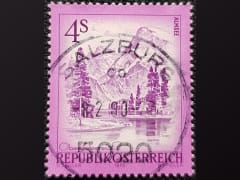
Austria
Town
Salzburg 2
Cacellation Date
7 Jan 1952
Town Info
Salzburg is an Austrian city on the border of Germany, with views of the Eastern Alps. The city is divided by the Salzach River, with medieval and baroque buildings of the pedestrian Altstadt (Old City) on its left bank, facing the 19th-century Neustadt (New City) on its right. The Altstadt birthplace of famed composer Mozart is preserved as a museum displaying his childhood instruments.
Location
Black Page 12
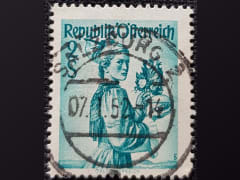
Austria
Town
Spielfeld
Cacellation Date
27 Feb 1948
Town Info
Location
Black Page 12
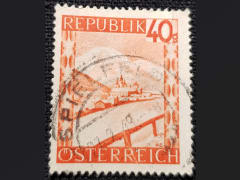
Austria
Town
St. Aegid
Cacellation Date
15 Aug 1952
Town Info
Location
Black Page 12
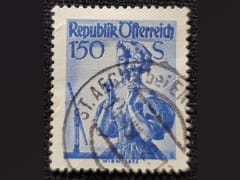
Austria
Town
Steyr
Cacellation Date
Town Info
Steyr is a statutory city, located in the Austrian federal state of Upper Austria. It is the administrative capital, though not part of Steyr-Land District. Steyr is Austria's 12th most populated town and the 3rd largest town in Upper Austria.
Location
Black Page 12
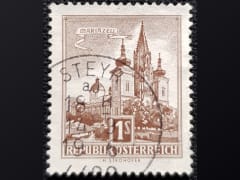
Austria
Town
Velden Worthersee
Cacellation Date
18 Jun 1952
Town Info
Velden am Wörthersee is a market town in Villach-Land District, in the Austrian state of Carinthia. Situated on the western shore of the Wörthersee lake, it is one of the country's most popular holiday resorts.
Location
Black Page 12
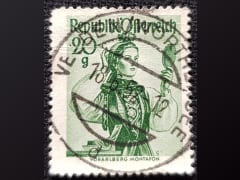
Austria
Town
Wien
Cacellation Date
16 Oct 1972
Town Info
Vienna, Austria’s capital, lies in the country’s east on the Danube River. Its artistic and intellectual legacy was shaped by residents including Mozart, Beethoven and Sigmund Freud. The city is also known for its Imperial palaces, including Schönbrunn, the Habsburgs’ summer residence. In the MuseumsQuartier district, historic and contemporary buildings display works by Egon Schiele, Gustav Klimt and other artists.
Location
Black Page 12
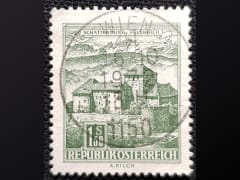
Austria
Town
Wien 1
Cacellation Date
Town Info
Vienna, Austria’s capital, lies in the country’s east on the Danube River. Its artistic and intellectual legacy was shaped by residents including Mozart, Beethoven and Sigmund Freud. The city is also known for its Imperial palaces, including Schönbrunn, the Habsburgs’ summer residence. In the MuseumsQuartier district, historic and contemporary buildings display works by Egon Schiele, Gustav Klimt and other artists.
Location
Black Page 12
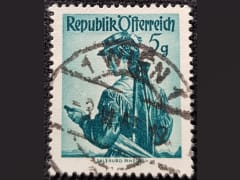
Austria
Town
Wien 1/1
Cacellation Date
Mar 1901
Town Info
Vienna, Austria’s capital, lies in the country’s east on the Danube River. Its artistic and intellectual legacy was shaped by residents including Mozart, Beethoven and Sigmund Freud. The city is also known for its Imperial palaces, including Schönbrunn, the Habsburgs’ summer residence. In the Museums Quartier district, historic and contemporary buildings display works by Egon Schiele, Gustav Klimt and other artists.
Location
Black Page 12
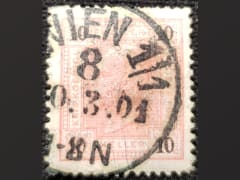
Austria
Town
Wien 101
Cacellation Date
18 Jan 1960
Town Info
Vienna, Austria’s capital, lies in the country’s east on the Danube River. Its artistic and intellectual legacy was shaped by residents including Mozart, Beethoven and Sigmund Freud. The city is also known for its Imperial palaces, including Schönbrunn, the Habsburgs’ summer residence. In the Museums Quartier district, historic and contemporary buildings display works by Egon Schiele, Gustav Klimt and other artists.
Location
Black Page 12
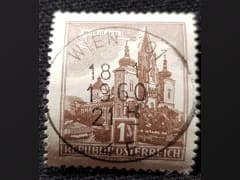
Austria
Town
Wien 2/5
Cacellation Date
Jan 1892
Town Info
Vienna, Austria’s capital, lies in the country’s east on the Danube River. Its artistic and intellectual legacy was shaped by residents including Mozart, Beethoven and Sigmund Freud. The city is also known for its Imperial palaces, including Schönbrunn, the Habsburgs’ summer residence. In the Museums Quartier district, historic and contemporary buildings display works by Egon Schiele, Gustav Klimt and other artists.
Location
Black Page 12
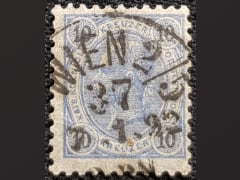
Austria
Town
Wien 3/4
Cacellation Date
8 May 1872
Town Info
Vienna, Austria’s capital, lies in the country’s east on the Danube River. Its artistic and intellectual legacy was shaped by residents including Mozart, Beethoven and Sigmund Freud. The city is also known for its Imperial palaces, including Schönbrunn, the Habsburgs’ summer residence. In the MuseumsQuartier district, historic and contemporary buildings display works by Egon Schiele, Gustav Klimt and other artists.
Location
Collection
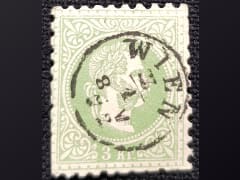
Austria
Town
Wien 36
Cacellation Date
Nov 1913
Town Info
Vienna, Austria’s capital, lies in the country’s east on the Danube River. Its artistic and intellectual legacy was shaped by residents including Mozart, Beethoven and Sigmund Freud. The city is also known for its Imperial palaces, including Schönbrunn, the Habsburgs’ summer residence. In the Museums Quartier district, historic and contemporary buildings display works by Egon Schiele, Gustav Klimt and other artists.
Location
Black Page 12
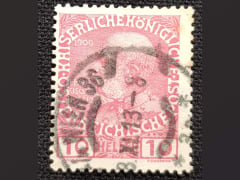
Austria
Town
Wien 37
Cacellation Date
Town Info
Vienna, Austria’s capital, lies in the country’s east on the Danube River. Its artistic and intellectual legacy was shaped by residents including Mozart, Beethoven and Sigmund Freud. The city is also known for its Imperial palaces, including Schönbrunn, the Habsburgs’ summer residence. In the Museums Quartier district, historic and contemporary buildings display works by Egon Schiele, Gustav Klimt and other artists.
Location
Black Page 12
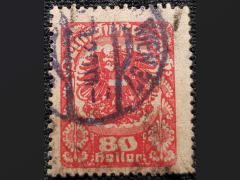
Austria
Town
Wien 71
Cacellation Date
Town Info
Vienna, Austria’s capital, lies in the country’s east on the Danube River. Its artistic and intellectual legacy was shaped by residents including Mozart, Beethoven and Sigmund Freud. The city is also known for its Imperial palaces, including Schönbrunn, the Habsburgs’ summer residence. In the Museums Quartier district, historic and contemporary buildings display works by Egon Schiele, Gustav Klimt and other artists.
Location
Black Page 12
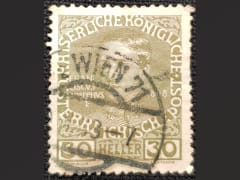
Austria
Town
Wien 8
Cacellation Date
5 Jan 1923
Town Info
Vienna, Austria’s capital, lies in the country’s east on the Danube River. Its artistic and intellectual legacy was shaped by residents including Mozart, Beethoven and Sigmund Freud. The city is also known for its Imperial palaces, including Schönbrunn, the Habsburgs’ summer residence. In the Museums Quartier district, historic and contemporary buildings display works by Egon Schiele, Gustav Klimt and other artists.
Location
Collection
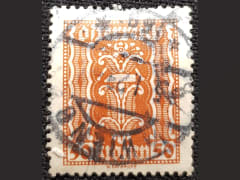
CountryBelgium
Belgium
Town
Kortrijk
Cacellation Date
4 Feb 1970
Town Info
Kortrijk is the capital and largest city of the judicial and administrative arrondissement of Kortrijk. The wider municipality comprises the city of Kortrijk proper and the villages of Aalbeke, Bellegem, Bissegem, Heule, Kooigem, Marke, and Rollegem. Kortrijk is also part of the cross-border Lille-Kortrijk-Tournai metropolitan area.[4][5] The city is on the river Leie, 42 km (26 mi) southwest of Ghent and 25 km (16 mi) northeast of Lille. Mouscron in Wallonia is just south of Kortrijk.[6] Beguinage of Kortrijk Kortrijk originated from a Gallo-Roman town, Cortoriacum[7], at a crossroads near the Leie river and two Roman roads. In the Middle Ages, Kortrijk grew significantly thanks to the flax and wool industry with France and England and became one of the biggest and richest cities in Flanders. The city is often referred to as City of Groeninge or City of the Golden Spurs, referring to the Battle of Courtrai or the Battle of the Golden Spurs which took place on 11 July 1302 on the Fields of Groeninge in Kortrijk. In 1820 the Treaty of Kortrijk was signed, laying out the still-current borders between France and Belgium. Throughout the 19th and 20th century, the flax industry flourished and remains important within the Belgian textile industry today. Kortrijk is the largest city in southern West Flanders, with several hospitals, colleges and a university. Kortrijk was the first city in Belgium with a pedestrian shopping street, the Korte Steenstraat.
Location
Black Page 12
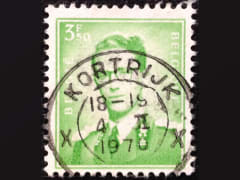
Belgium
Town
Nivelles-Nord
Cacellation Date
21 Mar 1929
Town Info
Nivelles is a Walloon city and municipality located in the Belgian province of Walloon Brabant. The Nivelles municipality includes the old communes of Baulers, Bornival, Thines, and Monstreux. The Nivelles district includes all the municipalities in Walloon Brabant.
Location
Black Page 15
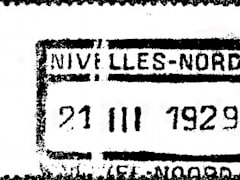
Belgium
Town
Oosteinde
Cacellation Date
Town Info
Ostend is a city on the Belgian coast. It's known for its long beach and promenade. Docked in the marina, the Mercator is a 3-masted 1930s ship that now acts as a floating museum. The Mu.ZEE displays Belgian art from the 1830s onward. The neo-Gothic–style Church of St. Peter and St. Paul has soaring spires and distinctive stained-glass windows. Near the harbor, Fort Napoleon is a 5-sided fortification built in 1811.
Location
Black Page 12
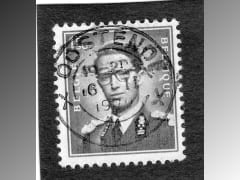
Belgium
Town
Verviers
Cacellation Date
23 May 1946
Town Info
Verviers is a Walloon city and municipality located in the Belgian province of Liège. The Verviers municipality includes the old communes of Ensival, Lambermont, Petit-Rechain, Stembert, and Heusy.
Location
Black Page 12
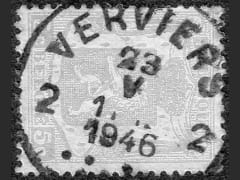
Belgium
Town
Waremme - Borgworm
Cacellation Date
19 Apr 1929
Town Info
Waremme (Dutch: Borgworm) is a Walloon municipality located in the province of Liège, in Belgium. The city is located on the River Geer (Dutch: Jeker), in the loessic Haspengouw region. The economy is based on the cultivation of cereals and sugar beet, and on the food industry. The municipality of Waremme includes the following villages: Bettincourt (Dutch: Bettenhoven), Bleret, Bovenistier, Grand-Axhe, Lantermange, and Oleye (Dutch: Liek).
Location
Black Page 15
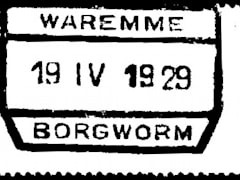
CountryCyprus
Cyprus
Town
Limassol
Cacellation Date
05 No
Town Info
Limassol is a city on the southern coast of Cyprus. It’s known for the centuries-old Limassol Castle, home to the Cyprus Medieval Museum and its collection of pottery and tombstones. On the seafront is the Prokymea (Molos) Sculpture Park, with sculptures by Cypriot, Greek and international artists. To the northeast is the Limassol Archaeological Museum, exhibiting artifacts from the Neolithic to the Roman periods.
Location
Black Page 12
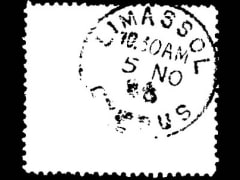
Cyprus
Town
Nicosia
Cacellation Date
1 Fe 1999
Town Info
Nicosia, also known as Lefkosia, is the divided capital city of Cyprus. South of the border, on the Greek side, the Cyprus Museum has archaeological finds from the Neolithic to Byzantine periods, including the Aphrodite of Soloi statue. Nearby, the old city’s 16th-century Venetian walls include the Famagusta, Kyrenia and Paphos gates. Inside the walls, a marble mausoleum sits next to 19th-century Faneromeni Church.
Location
Covers
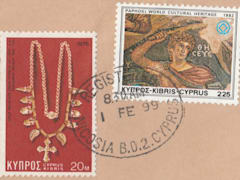
CountryCzechoslovakia
Czechoslovakia
Town
Praha 1
Cacellation Date
Town Info
Prague, capital city of the Czech Republic, is bisected by the Vltava River. Nicknamed “the City of a Hundred Spires,” it's known for its Old Town Square, the heart of its historic core, with colorful baroque buildings, Gothic churches and the medieval Astronomical Clock, which gives an animated hourly show. Completed in 1402, pedestrian Charles Bridge is lined with statues of Catholic saints.
Location
Black Page 12
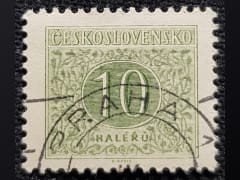
Czechoslovakia
Town
Praha 40
Cacellation Date
21 Aug 1946
Town Info
Prague, capital city of the Czech Republic, is bisected by the Vltava River. Nicknamed “the City of a Hundred Spires,” it's known for its Old Town Square, the heart of its historic core, with colorful baroque buildings, Gothic churches and the medieval Astronomical Clock, which gives an animated hourly show. Completed in 1402, pedestrian Charles Bridge is lined with statues of Catholic saints.
Location
Black Page 12
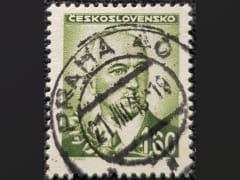
Czechoslovakia
Town
Praha 59
Cacellation Date
10 Sep 1945
Town Info
Prague, capital city of the Czech Republic, is bisected by the Vltava River. Nicknamed “the City of a Hundred Spires,” it's known for its Old Town Square, the heart of its historic core, with colorful baroque buildings, Gothic churches and the medieval Astronomical Clock, which gives an animated hourly show. Completed in 1402, pedestrian Charles Bridge is lined with statues of Catholic saints.
Location
Collection
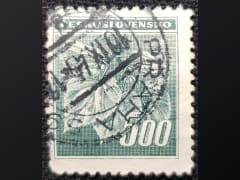
Czechoslovakia
Town
Ropica
Cacellation Date
Town Info
Location
Collection
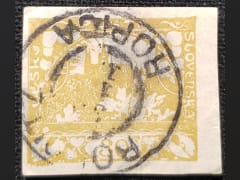
Czechoslovakia
Town
Teplice
Cacellation Date
Town Info
Teplice is located in the North Bohemia region, near the border with the German state of Saxony. It is situated in the valley of the Bílina river between the slopes of the Ore Mountains (Czech: Krušné Hory) in the northwest and the Central Bohemian Uplands (České středohoří) in the southeast, about 15 km (9.3 mi) west of Ústí nad Labem. The municipal area comprises the cadastral communities of Teplice proper, Prosetice, Nová Ves, Řetenice, Hudcov, Trnovany, and Sobědruhy.
Location
Black Page 12

Czechoslovakia
Town
Troppau
Cacellation Date
1919
Town Info
Opava is a city in the eastern Czech Republic on the river Opava, located to the north-west of Ostrava. Opava is one of the historical centres of Silesia. It was a historical capital of Czech Silesia. Opava is now in the Moravian-Silesian Region and has a population of more than 55,000.
Location
Black Page 12

Czechoslovakia
Town
Zilina
Cacellation Date
Town Info
Žilina is a city in north-western Slovakia, around 200 kilometres (120 mi) from the capital Bratislava, close to both the Czech and Polish borders. It is the fourth largest city of Slovakia with a population of approximately 80,000, an important industrial center, the largest city on the Váh river, and the seat of a kraj (Žilina Region) and of an okres (Žilina District). It belongs to the Upper Váh region of tourism.
Location
Collection
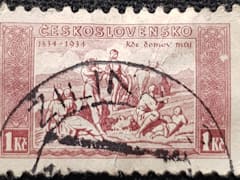
CountryDenmark
Denmark
Town
Bredstrup
Cacellation Date
9 Dec 1949
Town Info
Bredstrup is a small town in South Jutland with 469 inhabitants (2019) [1] . Bredstrup is located one kilometer south of Pjedsted , nine kilometers west of Fredericia and 17 kilometers south of Vejle . The city belongs to the municipality of Fredericia and is located in the Region of Southern Denmark
Location
Black Page 12
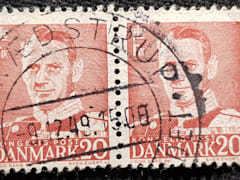
Denmark
Town
Herning
Cacellation Date
10 Mar 1966
Town Info
Herning is a Danish city in Region Midtjylland, on the Jutland peninsula. It is the main town and the administrative seat of Herning Municipality.
Location
Black Page 12
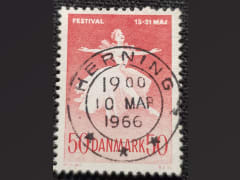
Denmark
Town
Hornslet
Cacellation Date
18 May 1961
Town Info
Hornslet is a village located in East Jutland, on the westernmost Djursland, Denmark. It is a commuter town of the city of Aarhus, which lies approximately 28 kilometers to the southwest, and a railway town at Grenaabanen, the railroad between the cities of Aarhus and Grenaa.
Location
Black Page 12
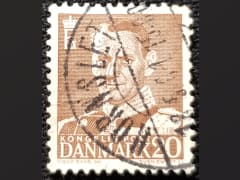
Denmark
Town
Kobenhavn
Cacellation Date
28 Mar 1950
Town Info
Copenhagen, Denmark’s capital, sits on the coastal islands of Zealand and Amager. It’s linked to Malmo in southern Sweden by the Öresund Bridge. Indre By, the city's historic center, contains Frederiksstaden, an 18th-century rococo district, home to the royal family’s Amalienborg Palace. Nearby is Christiansborg Palace and the Renaissance-era Rosenborg Castle, surrounded by gardens and home to the crown jewels.
Location
Black Page 12
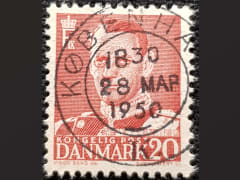
Denmark
Town
Silkeborg
Cacellation Date
13 Sep 1975
Town Info
Silkeborg is a Danish town with a population of 46,923. Silkeborg is the seat of Silkeborg City Council. Silkeborg is located in the middle of the Jutlandic peninsula, slightly west of the geographical centre of Denmark
Location
Black Page 12
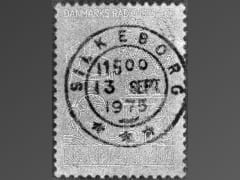
CountryFrance
France
Town
Corbehem
Cacellation Date
21 Dec 1970
Town Info
Corbehem is a commune in the Pas-de-Calais department in the Hauts-de-France region of France. A farming and light industrial village located 17 miles (27 km) northeast of Arras on the D45 road. The Scarpe river flows through the commune.
Location
Covers
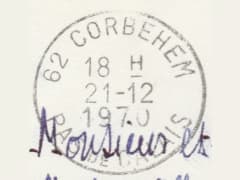
France
Town
Cornillon
Cacellation Date
27 May
Town Info
Cornillon is a commune in the Gard department in southern France.
Location
Black Page 13
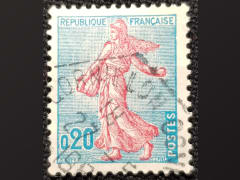
France
Town
Morez
Cacellation Date
9 Nov 1966
Town Info
Morez is a former commune of the Jura department in Bourgogne-Franche-Comté in eastern France. On 1 January 2016, it was merged into the new commune ...
Location
Black Page 13
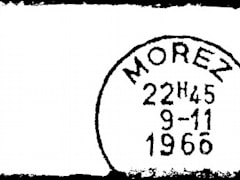
France
Town
Morlaix
Cacellation Date
21 Jul 1949
Town Info
Morlaix is a commune in the Finistère department of Brittany in northwestern France. It is a sub-prefecture of the department.
Location
Box
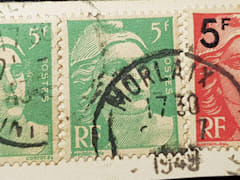
CountryGreece
Greece
Town
103
Cacellation Date
Town Info
Location
Black Page 13
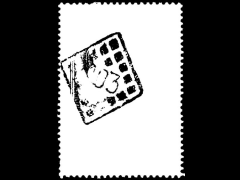
Greece
Town
Aohnai
Cacellation Date
1 Oct 1896
Town Info
Athens is the capital of Greece. It was also at the heart of Ancient Greece, a powerful civilization and empire. The city is still dominated by 5th-century BC landmarks, including the Acropolis, a hilltop citadel topped with ancient buildings like the colonnaded Parthenon temple. The Acropolis Museum, along with the National Archaeological Museum, preserves sculptures, vases, jewelry and more from Ancient Greece.
Location
Collection

Greece
Town
Kepkypa
Cacellation Date
Town Info
Location
Collection
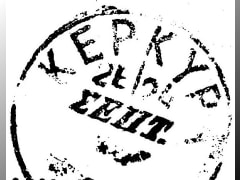
CountryHungary
Hungary
Town
Budapest
Cacellation Date
August 1929
Town Info
Budapest, Hungary’s capital, is bisected by the River Danube. Its 19th-century Chain Bridge connects the hilly Buda district with flat Pest. A funicular runs up Castle Hill to Buda’s Old Town, where the Budapest History Museum traces city life from Roman times onward. Trinity Square is home to 13th-century Matthias Church and the turrets of the Fishermen’s Bastion, which offer sweeping views.
Location
Black Page 13
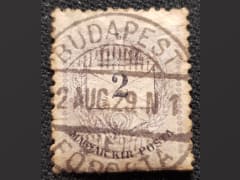
Hungary
Town
Sarret
Cacellation Date
Town Info
Location
Black Page 13
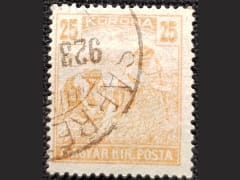
Hungary
Town
Vasarosnameny
Cacellation Date
Town Info
Vásárosnamény is a small town in Szabolcs-Szatmár-Bereg county, in the Northern Great Plain region of eastern Hungary. It also includes Vitka since 1969, and in 1939 Gergelyi and Ugornya formed by uniting Gergelyiugornya.
Location
Black Page 13
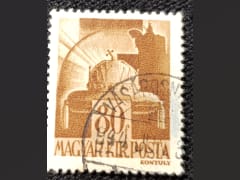
CountryItaly
Italy
Town
Alessandria
Cacellation Date
1 Feb 1962
Town Info
Alessandria is a city and comune in Piedmont, Italy, and the capital of the Province of Alessandria. The city is sited on the alluvial plain between the Tanaro and the Bormida rivers, about 90 kilometres southeast of Turin. Alessandria is also a major railway hub.
Location
Strips
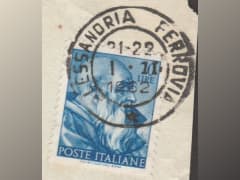
Italy
Town
Arezzo
Cacellation Date
Town Info
Arezzo is a city in eastern Tuscany, Italy. The hilltop Arezzo Cathedral features painted vaulted ceilings and a 15th-century fresco of Mary Magdalene by Piero della Francesca. Nearby, the Basilica di San Francesco has a chapel decorated with more Piero frescoes. The Basilica di San Domenico contains the 13th-century “Crucifix” painted by Cimabue. The imposing Medicean Fortress has sweeping city views.
Location
Black Page 13
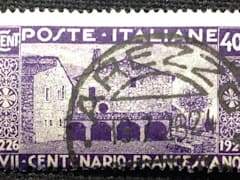
Italy
Town
Arezzo *
Cacellation Date
8 Jan 1934
Town Info
Arezzo is a city in eastern Tuscany, Italy. The hilltop Arezzo Cathedral features painted vaulted ceilings and a 15th-century fresco of Mary Magdalene by Piero della Francesca. Nearby, the Basilica di San Francesco has a chapel decorated with more Piero frescoes. The Basilica di San Domenico contains the 13th-century “Crucifix” painted by Cimabue. The imposing Medicean Fortress has sweeping city views.
Location
Black Page 13
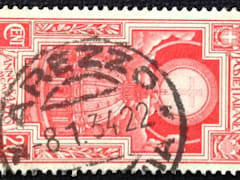
Italy
Town
Assisi
Cacellation Date
Town Info
Assisi is a hill town in central Italy’s Umbria region. It was the birthplace of St. Francis (1181–1226), one of Italy’s patron saints. The Basilica of St. Francis is a massive, 2-level church, consecrated in 1253. Its 13th-century frescoes portraying the life of St. Francis have been attributed to Giotto and Cimabue, among others. The crypt houses the saint’s stone sarcophagus.
Location
Black Page 13
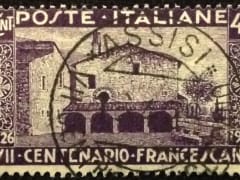
Italy
Town
Baveno
Cacellation Date
1 Sep 1928
Town Info
Baveno is a town and comune in the province of Verbano-Cusio-Ossola, part of Piedmont, northern Italy. It is on the west shore of Lago Maggiore, 21 kilometres northwest of Arona by rail.
Location
Black Page 13
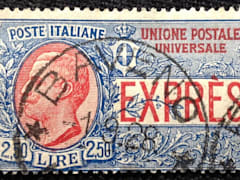
Italy
Town
Biella
Cacellation Date
1953
Town Info
Biella is a small city and comune in the northern Italian region of Piedmont, the capital of the province of the same name, with a population of 44,324 as of 31 December 2017. It is located about 80 kilometres northeast of Turin and about 80 kilometres west-northwest of Milan.
Location
Black Page 13
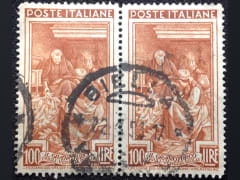
Italy
Town
Capri
Cacellation Date
Town Info
Capri, an island in Italy’s Bay of Naples, is famed for its rugged landscape, upscale hotels and shopping, from designer fashions to limoncello and handmade leather sandals. One of its best-known natural sites is the Blue Grotto, a dark cavern where the sea glows electric blue, the result of sunlight passing through an underwater cave. In summer, Capri's dramatic, cove-studded coastline draws many yachts.
Location
Black Page 13
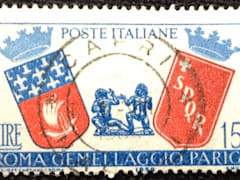
Italy
Town
Castiglioncello
Cacellation Date
29 Oct 1932
Town Info
Castiglioncello is a frazione of the comune of Rosignano Marittimo, in the province of Livorno, Tuscany, Italy. It stands on a promontory reaching out into the Ligurian Sea, surrounded by pinewoods and hills that fall right down to the sea forming cliffs, little inlets, coves and sandy beaches.
Location
Black Page 13
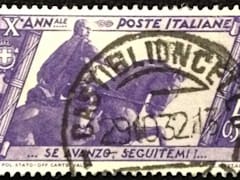
Italy
Town
Certaldo
Cacellation Date
2 Mar 1931
Town Info
Certaldo is a town and comune of Tuscany, Italy, in the Metropolitan City of Florence, in the middle of Valdelsa. It is about 35 kilometres southwest of the Florence Duomo. It is 50 minutes by rail and 35 minutes by car southwest of Florence, and it is 40 minutes by rail north of Siena.
Location
Black Page 13
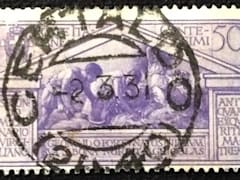
Italy
Town
Faltona
Cacellation Date
18 Aug 1962
Town Info
The village of Faltona belongs to the municipality of Talla, in the province of Arezzo, region Toscana. Information about hotel, weather, video, road map, ..
Location
Collection
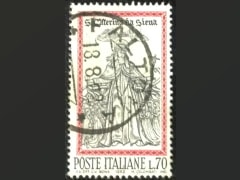
Italy
Town
Ferrovia
Cacellation Date
10 Nov 1962
Town Info
Location
Black Page 13
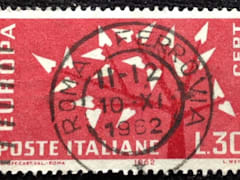
Italy
Town
Fiesole
Cacellation Date
11 Jan 1930
Town Info
Fiesole is a town and comune of the Metropolitan City of Florence in the Italian region of Tuscany, on a scenic height above Florence, 5 km northeast of that city.
Location
Black Page 13
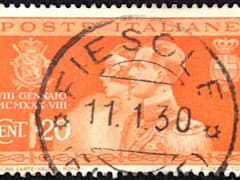
Italy
Town
Firenze
Cacellation Date
16 Jul 1958
Town Info
Florence, capital of Italy’s Tuscany region, is home to many masterpieces of Renaissance art and architecture. One of its most iconic sights is the Duomo, a cathedral with a terracotta-tiled dome engineered by Brunelleschi and a bell tower by Giotto. The Galleria dell'Accademia displays Michelangelo’s “David” sculpture. The Uffizi Gallery exhibits Botticelli’s “The Birth of Venus” and da Vinci’s “Annunciation.”
Location
Black Page 13
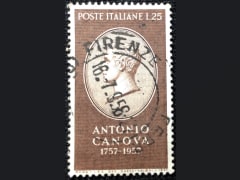
Italy
Town
Firenze *
Cacellation Date
6 Nov 1942
Town Info
Florence, capital of Italy’s Tuscany region, is home to many masterpieces of Renaissance art and architecture. One of its most iconic sights is the Duomo, a cathedral with a terracotta-tiled dome engineered by Brunelleschi and a bell tower by Giotto. The Galleria dell'Accademia displays Michelangelo’s “David” sculpture. The Uffizi Gallery exhibits Botticelli’s “The Birth of Venus” and da Vinci’s “Annunciation.”
Location
Black Page 13
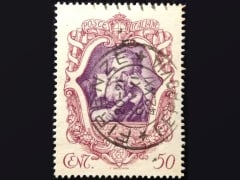
Italy
Town
Gallipoli
Cacellation Date
20 May 1926
Town Info
Gallipoli is a coastal town in Apulia, southern Italy. The historic center, on an island off the mainland, shelters churches like St. Agatha’s Cathedral, with its ornate facade. Nearby, the Church of St. Mary of Purity has a maiolica tiled floor. Gallipoli Castle includes the Rivellino tower, standing apart from the main building. Across the bridge, on the mainland, is the Greek Fountain, dating from the Renaissance.
Location
Black Page 13

Italy
Town
Genova
Cacellation Date
16 Jun 1952
Town Info
Genoa (Genova) is a port city and the capital of northwest Italy's Liguria region. It's known for its central role in maritime trade over many centuries. In the old town stands the Romanesque Cathedral of San Lorenzo, with its black-and-white-striped facade and frescoed interior. Narrow lanes open onto monumental squares like Piazza de Ferrari, site of an iconic bronze fountain and Teatro Carlo Felice opera house.
Location
Black Page 13
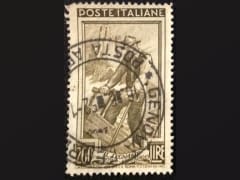
Italy
Town
Genova.
Cacellation Date
21 Feb 1931
Town Info
Genoa (Genova) is a port city and the capital of northwest Italy's Liguria region. It's known for its central role in maritime trade over many centuries. In the old town stands the Romanesque Cathedral of San Lorenzo, with its black-and-white-striped facade and frescoed interior. Narrow lanes open onto monumental squares like Piazza de Ferrari, site of an iconic bronze fountain and Teatro Carlo Felice opera house.
Location
Black Page 13
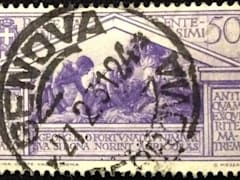
Italy
Town
Livorno
Cacellation Date
8 Jan 1934
Town Info
Livorno is an Italian port city on the west coast of Tuscany. It's known for its seafood, Renaissance-era fortifications and modern harbor with a cruise ship port. Its central Terrazza Mascagni, a waterside promenade with checkerboard paving, is the city's main gathering place. The bastions of the 16th-century Fortezza Vecchia face the harbor and open onto Livorno's canal-laced Venezia Nuova quarter.
Location
Black Page 13
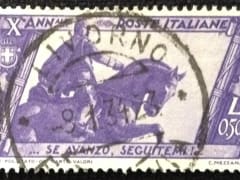
Italy
Town
Lucca
Cacellation Date
24 Jan 1933
Town Info
Lucca is a city on the Serchio river in Italy’s Tuscany region. It’s known for the well-preserved Renaissance walls encircling its historic city center and its cobblestone streets. Broad, tree-lined pathways along the tops of these massive 16th- and 17th-century ramparts are popular for strolling and cycling. Casa di Puccini, where the great opera composer was born, is now a house museum.
Location
Collection

Italy
Town
Mantova
Cacellation Date
21 Mar 1963
Town Info
Mantua is a city surrounded by 3 artificial lakes in the northern Italian region of Lombardy. It's known for the architectural legacy of the Renaissance Gonzaga rulers, who built the Ducal Palace. This imposing building houses the Bridal Chamber, decorated with Andrea Mantegna frescoes. The Gonzagas also built the Te Palace, known for the Chamber of the Giants, where every surface is painted with mythological scenes.
Location
Strips
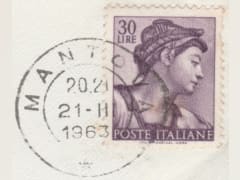
Italy
Town
Milano
Cacellation Date
1 Dec 1953
Town Info
Milan, a metropolis in Italy's northern Lombardy region, is a global capital of fashion and design. Home to the national stock exchange, it’s a financial hub also known for its high-end restaurants and shops. The Gothic Duomo di Milano cathedral and the Santa Maria delle Grazie convent, housing Leonardo da Vinci’s mural “The Last Supper,” testify to centuries of art and culture.
Location
File
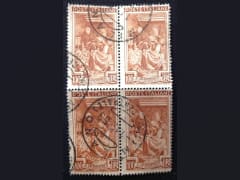
Italy
Town
Milano-Centro
Cacellation Date
20 Dec 1933
Town Info
Milan, a metropolis in Italy's northern Lombardy region, is a global capital of fashion and design. Home to the national stock exchange, it’s a financial hub also known for its high-end restaurants and shops. The Gothic Duomo di Milano cathedral and the Santa Maria delle Grazie convent, housing Leonardo da Vinci’s mural “The Last Supper,” testify to centuries of art and culture.
Location
Black Page 13
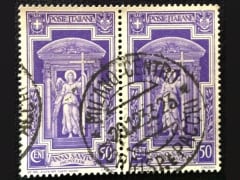
Italy
Town
Montelongo
Cacellation Date
Town Info
Montelongo is a comune in the Province of Campobasso in the Italian region Molise, located about 30 kilometres northeast of Campobasso. Montelongo borders the following municipalities: Bonefro, Montorio nei Frentani, Rotello, Santa Croce di Magliano.
Location
Black Page 13
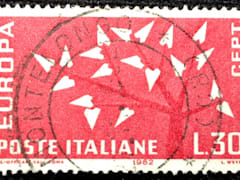
Italy
Town
Morozzo
Cacellation Date
Town Info
Morozzo is a comune (municipality) in the Province of Cuneo in the Italian region Piedmont, located about 70 kilometres (43 mi) south of Turin and about 14 kilometres (9 mi) northeast of Cuneo. Morozzo borders the following municipalities: Beinette, Castelletto Stura, Cuneo, Margarita, Mondovì, Montanera, Rocca de' Baldi, and Sant'Albano Stura.
Location
Collection
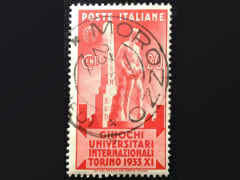
Italy
Town
Piazza Garibaldi
Cacellation Date
4 Nov 1921
Town Info
Location
Box
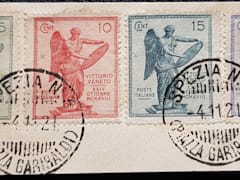
Italy
Town
Pietrasanta
Cacellation Date
Town Info
Pietrasanta is a town and comune on the coast of northern Tuscany in Italy, in the province of Lucca. Pietrasanta is part of Versilia, on the last foothills of the Apuan Alps, about 32 kilometres north of Pisa. The town is located 3 kilometres off the coast, where the frazione of Marina di Pietrasanta is located.
Location
Black Page 13
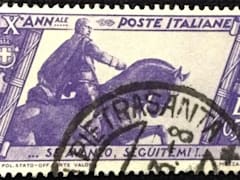
Italy
Town
Pisa
Cacellation Date
17 Jun 1933
Town Info
Pisa is a city in Italy's Tuscany region best known for its iconic Leaning Tower. Already tilting when it was completed in 1372, the 56m white-marble cylinder is the bell tower of the Romanesque, striped-marble cathedral that rises next to it in the Piazza dei Miracoli. Also in the piazza is the Baptistry, whose renowned acoustics are demonstrated by amateur singers daily, and the Caposanto Monumentale cemetery.
Location
Black Page 13
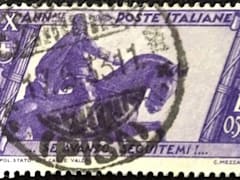
Italy
Town
Pistoia
Cacellation Date
13 Apr 1932
Town Info
Pistoia is a city in Italy’s Tuscany region. Set around its central Piazza del Duomo are the Cathedral of San Zeno, which has a silver altar, and the octagonal Battistero di San Giovanni in Corte baptistery. Also on the square is the Palazzo dei Vescovi, an 11th-century palace housing a number of museums. On the nearby Piazza della Sala, the Pozzo del Leoncino is a well with a marble frame.
Location
Black Page 13
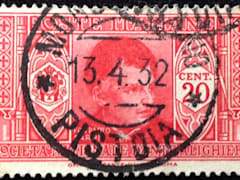
Italy
Town
Poggibonsi
Cacellation Date
27 Nov 1933
Town Info
Poggibonsi is a town in the province of Siena, Tuscany, central Italy. It is located on the Elsa River and is the main centre of the Valdelsa Valley.
Location
Black Page 13
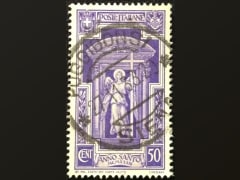
Italy
Town
Prato
Cacellation Date
Town Info
Prato is a city and comune in Tuscany, Italy, the capital of the Province of Prato. The city lies 17 kilometres north-west of Florence, at the foot of Monte Retaia, elevation 768 metres, the last peak in the Calvana chain.
Location
Black Page 13
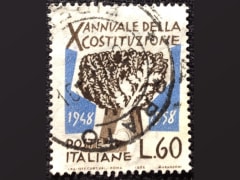
Italy
Town
Rho
Cacellation Date
29 Dec 1964
Town Info
Rho is lapped by the river Olona and crossed by its tributaries Bozzente and Lura, nowadays partially cloaked inside the town. At the north and east of the town, there is the Strada statale 33 del Sempione, which in the past was crossing the town itself, in the current corso Europa. Rho is at the meeting point of railways linking Milan to Varese and Domodossola and Milan to Novara.
Location
On Piece
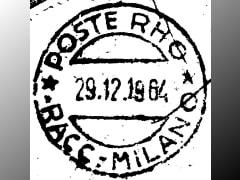
Italy
Town
Roma
Cacellation Date
16 Nov 1928
Town Info
Rome is the capital city and a special comune of Italy. Rome also serves as the capital of the Lazio region. With 2,872,800 residents in 1,285 km², it is also the country's most populated comune. It is the fourth most populous city in the European Union by population within city limits.
Location
Black Page 13
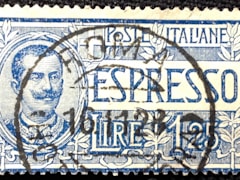
Italy
Town
San Domenico di Fiesole
Cacellation Date
1 April 1930
Town Info
The Convent of San Domenico is a Dominican convent in Fiesole, Italy, situated between the hill of Fiesole and the suburbs of Florence.
Location
Black Page 13
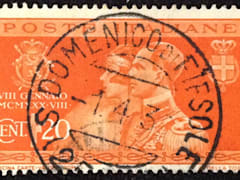
Italy
Town
Santa Margherita
Cacellation Date
Town Info
Santa Margherita Ligure is a comune in the Metropolitan City of Genoa in the Italian region Liguria, located about 35 kilometres southeast of Genoa, in the area traditionally known as Tigullio. It has a port, used for both tourism and fishing activities.
Location
Black Page 13
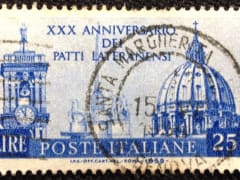
Italy
Town
Siena
Cacellation Date
25 Jun 1931
Town Info
Siena, a city in central Italy’s Tuscany region, is distinguished by its medieval brick buildings. The fan-shaped central square, Piazza del Campo, is the site of the Palazzo Pubblico, the Gothic town hall, and Torre del Mangia, a slender 14th-century tower with sweeping views from its distinctive white crown. The city’s 17 historic “contrade” (districts) extend outward from the piazza.
Location
Black Page 13
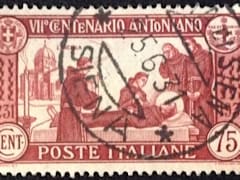
Italy
Town
Siena - Arrivi Partenze
Cacellation Date
1931
Town Info
Siena, a city in central Italy’s Tuscany region, is distinguished by its medieval brick buildings. The fan-shaped central square, Piazza del Campo, is the site of the Palazzo Pubblico, the Gothic town hall, and Torre del Mangia, a slender 14th-century tower with sweeping views from its distinctive white crown. The city’s 17 historic “contrade” (districts) extend outward from the piazza.
Location
Black Page 13
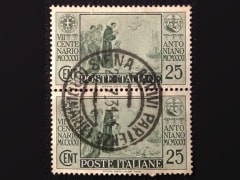
Italy
Town
Spezia
Cacellation Date
27 Nov 1926
Town Info
La Spezia is a port city in Liguria, Italy. Its 1800s maritime arsenal and the Technical Naval Museum, with ship models and navigational instruments, attest to the city’s seafaring heritage. The hilltop St. George’s Castle houses an archaeological museum with artifacts from prehistory to the Middle Ages. The nearby Amedeo Lia Museum exhibits paintings, bronze sculptures and illuminated miniatures in a former convent.
Location
Black Page 13
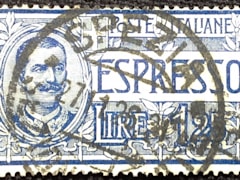
Italy
Town
Spezia x
Cacellation Date
11 May 1926
Town Info
La Spezia is a port city in Liguria, Italy. Its 1800s maritime arsenal and the Technical Naval Museum, with ship models and navigational instruments, attest to the city’s seafaring heritage. The hilltop St. George’s Castle houses an archaeological museum with artifacts from prehistory to the Middle Ages. The nearby Amedeo Lia Museum exhibits paintings, bronze sculptures and illuminated miniatures in a former convent.
Location
Black Page 13
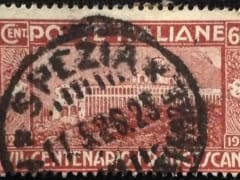
Italy
Town
Torricella
Cacellation Date
1926
Town Info
Torricella Sicura is a town and comune in the province of Teramo, in the Abruzzo region of central Italy. It is located in the natural park known as the "Gran Sasso e Monti della Laga National Park".
Location
Black Page 13
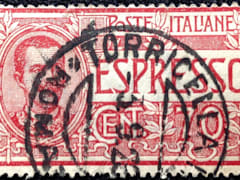
Italy
Town
Varazze
Cacellation Date
31 Aug 1979
Town Info
Varazze is a comune in the Province of Savona in the Italian region of Liguria, located about 30 kilometres west of Genoa and about 11 kilometres northeast of Savona in the Riviera di Ponente. Nearby in the Ligurian Apennines is the Monte Beigua with its Natural Regional Park.
Location
Covers

Italy
Town
Venezia
Cacellation Date
19 Nov 1925
Town Info
Venice, the capital of northern Italy’s Veneto region, is built on more than 100 small islands in a lagoon in the Adriatic Sea. It has no roads, just canals – including the Grand Canal thoroughfare – lined with Renaissance and Gothic palaces. The central square, Piazza San Marco, contains St. Mark’s Basilica, which is tiled with Byzantine mosaics, and the Campanile bell tower offering views of the city’s red roofs.
Location
Black Page 13
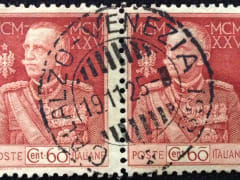
CountryLatvia
Latvia
Town
Driceni
Cacellation Date
6 Aug 1937
Town Info
Location
Collection
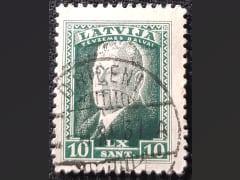
Latvia
Town
Leepaja
Cacellation Date
4 Feb 1920
Town Info
Liepāja is a port city on Latvia’s west coast. It’s known for long Liepāja Beach, on the Baltic Sea. The beach is backed by Seaside Park, featuring a concert stage, a former bathhouse and the Ghost Tree, a monument to the influential Latvian rock band, Līvi. In the center, the Latvian Musicians’ Alley of Fame has plaques dedicated to the nation’s musicians. Holy Trinity Cathedral houses a huge mechanical organ.
Location
Collection
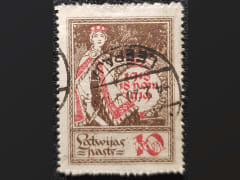
Latvia
Town
Riga
Cacellation Date
8 Mar 1935
Town Info
Riga, Latvia’s capital, is set on the Baltic Sea at the mouth of the River Daugava. It's considered a cultural center and is home to many museums and concert halls. The city is also known for its wooden buildings, art nouveau architecture and medieval Old Town. The pedestrian-only Old Town has many shops and restaurants and is home to busy Livu Square, with bars and nightclubs.
Location
Collection
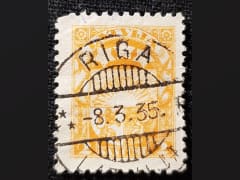
Latvia
Town
Riga 2
Cacellation Date
9 Sep 1929
Town Info
Riga, Latvia’s capital, is set on the Baltic Sea at the mouth of the River Daugava. It's considered a cultural center and is home to many museums and concert halls. The city is also known for its wooden buildings, art nouveau architecture and medieval Old Town. The pedestrian-only Old Town has many shops and restaurants and is home to busy Livu Square, with bars and nightclubs.
Location
Collection
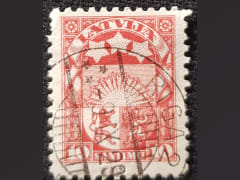
CountryMonaco
Monaco
Town
Monte Carlo
Cacellation Date
8 Feb 1961
Town Info
Monte Carlo is officially an administrative area of the Principality of Monaco, specifically the ward of Monte Carlo/Spélugues, where the Monte Carlo Casino is located
Location
Black Page 14
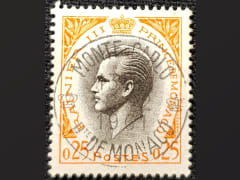
Monaco
Town
Monte Carlo.
Cacellation Date
19 Aug 1986
Town Info
Monte Carlo is officially an administrative area of the Principality of Monaco, specifically the ward of Monte Carlo/Spélugues, where the Monte Carlo Casino is located
Location
Covers
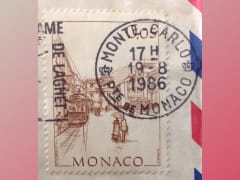
CountryNetherlands
Netherlands
Town
's-Hertogenbosch
Cacellation Date
1960
Town Info
's-Hertogenbosch, colloquially known as Den Bosch, is a city and municipality in the Southern Netherlands with a population of 152,968. It is the capital of the province of North Brabant.
Location
Collection
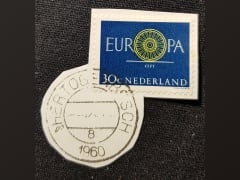
Netherlands
Town
Amsterdam
Cacellation Date
30 Jul 1892
Town Info
Amsterdam is the Netherlands’ capital, known for its artistic heritage, elaborate canal system and narrow houses with gabled facades, legacies of the city’s 17th-century Golden Age. Its Museum District houses the Van Gogh Museum, works by Rembrandt and Vermeer at the Rijksmuseum, and modern art at the Stedelijk. Cycling is key to the city’s character, and there are numerous bike paths.
Location
Black Page 14
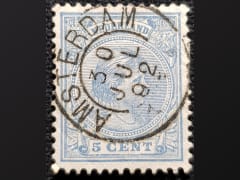
Netherlands
Town
Eindhoven
Cacellation Date
20 Jun 1908
Town Info
Eindhoven is a city in the province of North Brabant in the south Netherlands. Known as a technology and design hub, it’s the birthplace of Philips electronics, which built the Philips Stadium, home to the PSV soccer team. The Philips Museum traces the company's design history. Nearby, the Van Abbemuseum focuses on art and design. Northwest, the former industrial complex Strijp-S houses design shops and restaurants.
Location
Black Page 14
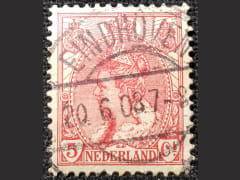
Netherlands
Town
Haarlem
Cacellation Date
16 Sep 1960
Town Info
Haarlem is a city outside of Amsterdam in the northwest Netherlands. Once a major North Sea trading port surrounded by a defensive wall, it retains its medieval character of cobblestone streets and gabled houses. It's the center of a major flower-bulb-growing district, and famous for its outlying tulip fields, art museums and hofjes (almshouses built around leafy courtyards).
Location
Black Page 14
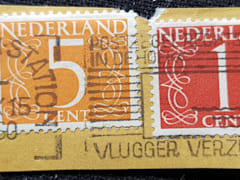
Netherlands
Town
Molenaarsgraaf
Cacellation Date
22 Jun 1948
Town Info
Molenaarsgraaf is a village in the Dutch province of South Holland. It is a part of the municipality of Molenwaard, and lies about 11 km west of Gorinchem. In 2001, the village of Molenaarsgraaf had 414 inhabitants. The built-up area of the village was 0.041 km², and contained 143 residences.
Location
Black Page 14
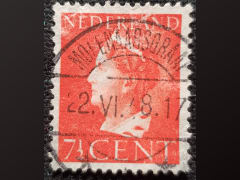
Netherlands
Town
Ootmarsum
Cacellation Date
23 Sep 1949
Town Info
Ootmarsum is a town in the Dutch province of Overijssel. It is a part of the municipality of Dinkelland, and lies about 10 km north of Oldenzaal. In 2001, the town of Ootmarsum had 4227 inhabitants. The built-up area of the town was 1.5 km², and contained 1620 residences.
Location
Black Page 14
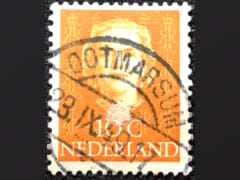
CountryPoland
Poland
Town
Ptaki
Cacellation Date
05 Jun 1964
Town Info
Ptaki is a village in the administrative district of Gmina Turośl, within Kolno County, Podlaskie Voivodeship, in north-eastern Poland. It lies approximately 11 kilometres west of Kolno and 97 km west of the regional capital Białystok. The village has a population of 216.
Location
Strips File
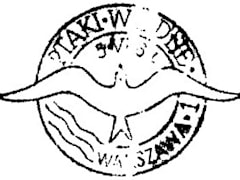
Poland
Town
Trembowla
Cacellation Date
Town Info
Terebovlia is a small city in the Ternopil Oblast of western Ukraine, and the administrative center of the Terebovlya Raion. It is an ancient settlement that traces its roots to the settlement of Terebovl which existed in Kievan Rus. The name may also be variously transliterated as Terebovlya / Terebovla / Terebovlja. The castle in Trembowla was built in the 14th century on a high hill over the valley of the Hniezna river. Despite its small size (100 metres by 40 metres), it was a strong fortress with walls up to 4 metres thick. After the Turks had captured Kamieniec Podolski (see Siege of Kamieniec Podolski), Trembowla was one of the few Podolian strongholds still in Polish hands. In the summer of 1675, a 30,000 strong Turkish-Tatar army under command of Ibrahim Shyshman entered Red Ruthenia, a province of the Polish-Lithuanian Commonwealth. On July 27, the invaders captured Zbaraz, on September 11, Podhajce, and on September 20, the Turks approached Trembowla. The castle was defended by a small unit of 80 infantry soldiers, some members of the local nobility, supported by 200 poorly armed, untrained peasants and residents of the town, who fled to the castle. Before the siege, a unit of dragoons stationed here, but was ordered to leave Trembowla, due to food shortages. Polish forces were commanded by Captain Jan Samuel Chrzanowski, whose wife, Anna Dorota Chrzanowska (née Anna Dorota von Fresen), became immortalized after the siege. Despite Turkish efforts, the defenders of castle managed to hold their positions after several attacks. After several days, however, shortages of food and water became severe, and Captain Chrzanowski decided to surrender. His wife disagreed with this decision, and threatened to commit suicide if her husband proceeded with the planned surrender, thereby stiffening his spine and creating an atmosphere for defending the castle. Furthermore, Anna Dorota urged the defenders to carry out an attack on Turkish positions, which resulted in heavy losses among the invaders. Chrzanowska’s determination raised the morale among the Poles, but their losses were also heavy. In the night of October 4/5, only 20 soldiers were able to fight. Facing danger from forces of Jan III Sobieski, which concentrated near Lwow, the Turks decided to end the siege on October 11.
Location
Collection
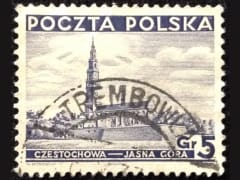
Poland
Town
Wilno 2
Cacellation Date
26 Jan 1939
Town Info
Vilnius, Lithuania’s capital, is known for its baroque architecture, seen especially in its medieval Old Town. But the buildings lining this district’s partially cobblestoned streets reflect diverse styles and eras, from the neoclassical Vilnius Cathedral to Gothic St. Anne's Church. The 16th-century Gate of Dawn, containing a shrine with a sacred Virgin Mary icon, once guarded an entrance to the original city. The Battle of Wilno was fought by the Polish Army against the Soviet invasion of Poland in 1939, which accompanied the German Invasion of Poland in accordance with Molotov–Ribbentrop Pact.[1]:82 On 18–19 September, Soviet forces took over the city of Wilno (now Vilnius). Polish forces, concentrated in the west, were relatively weak in the east. The Polish commanders, unsure whether to actively oppose the Soviet entry into Poland, did not use the full defensive capabilities of the town and nearby fortifications, although the outcome of the battle would not have been likely any different, given the overwhelming Soviet numerical superiority. Wilno, the capital of the Wilno Voivodship (province or region), was an important industrial centre in the north-eastern part of Poland and the sixth largest city in that country at the time. Administratively a part of the Grodno-based III Military Corps Area and under Józef Olszyna-Wilczyński, it was also an important garrison and mobilization centre. In the pre-war period, the city housed the entire Polish 1st Legions' Infantry Division, as well as the headquarters and the 4th Uhlan Regiment of the Wileńska Cavalry Brigade. Air cover was provided by the majority of the Polish 5th Air Regiment stationed at the nearby airfield of Porubanek (modern Kirtimai). In addition, the city of Wilno was a mobilization centre for the Polish 35th Infantry Division. Before the outbreak of war, the 1st Division had been secretly mobilized and sent towards Różan in northern Mazovia. The Wileńska Cavalry Brigade soon followed and in the first days of September 1939 left the city for Piotrków Trybunalski. The air assets were attached to the Modlin Army and the Narew Group fighting against the German units trying to break through from East Prussia. By 7 September the 35th Division was fully mobilized and transported to Lvov (modern Lviv, Ukraine); the city was left defenceless. The military commander of the city, Colonel Jarosław Okulicz-Kozaryn, decided that in case of attack by German or Soviet forces, he had insufficient forces for a successful defence and thus his task could only be to allow civilians to evacuate to neutral Lithuania (this was also realised, albeit not very clearly, by General Józef Olszyna-Wilczyński, commander of the 3rd military district which Wilno was also in).[2] On 17 September, the city had 14,000 soldiers and militia volunteers, but only 6,500 of them were armed. Before the battle, the numbers of armed soldiers rose slightly as some disorganized units trickled in, but the number of unarmed volunteers decreased, as Okulicz-Kozaryn ordered unarmed volunteers not to participate in any hostilities. Before the Soviets arrived, the Polish forces formed about 10 infantry battalions, supported by approximately 15 light artillery and anti-tank guns and about five anti-aircraft guns. The defenders also had some 40 machine guns. On 18 September, the commander of the Belarusian Front, Comandarm (roughly a general), Mikhail Kovalyov, ordered the capture of Wilno by groups of the 3rd and 11th Armies. The 3rd Army delegated the 24th Cavalry Division and the 22nd and 25th Armoured Divisions under Combrig (senior to colonel but junior to divisional commander), Pyotr Akhlyustin, to advance from the northeast and the 11th Army delegated the 36th Cavalry Division and the 6th Armoured Division under Combrig Semyon Zybin to advance from the southeast. Their task was to secure the city by the evening of 18 September; but due to logistical difficulties and the overestimation of the Polish defences, the operation was revised with the aim of securing the city by the morning of 19 September. Wilno, the capital of the Wilno Voivodship (province or region), was an important industrial centre in the north-eastern part of Poland and the sixth largest city in that country at the time. Administratively a part of the Grodno-based III Military Corps Area and under Józef Olszyna-Wilczyński, it was also an important garrison and mobilization centre. In the pre-war period, the city housed the entire Polish 1st Legions' Infantry Division, as well as the headquarters and the 4th Uhlan Regiment of the Wileńska Cavalry Brigade. Air cover was provided by the majority of the Polish 5th Air Regiment stationed at the nearby airfield of Porubanek (modern Kirtimai). In addition, the city of Wilno was a mobilization centre for the Polish 35th Infantry Division. Before the outbreak of war, the 1st Division had been secretly mobilized and sent towards Różan in northern Mazovia. The Wileńska Cavalry Brigade soon followed and in the first days of September 1939 left the city for Piotrków Trybunalski. The air assets were attached to the Modlin Army and the Narew Group fighting against the German units trying to break through from East Prussia. By 7 September the 35th Division was fully mobilized and transported to Lvov (modern Lviv, Ukraine); the city was left defenceless. The military commander of the city, Colonel Jarosław Okulicz-Kozaryn, decided that in case of attack by German or Soviet forces, he had insufficient forces for a successful defence and thus his task could only be to allow civilians to evacuate to neutral Lithuania (this was also realised, albeit not very clearly, by General Józef Olszyna-Wilczyński, commander of the 3rd military district which Wilno was also in).[2] On 17 September, the city had 14,000 soldiers and militia volunteers, but only 6,500 of them were armed. Before the battle, the numbers of armed soldiers rose slightly as some disorganized units trickled in, but the number of unarmed volunteers decreased, as Okulicz-Kozaryn ordered unarmed volunteers not to participate in any hostilities. Before the Soviets arrived, the Polish forces formed about 10 infantry battalions, supported by approximately 15 light artillery and anti-tank guns and about five anti-aircraft guns. The defenders also had some 40 machine guns. On 18 September, the commander of the Belarusian Front, Comandarm (roughly a general), Mikhail Kovalyov, ordered the capture of Wilno by groups of the 3rd and 11th Armies. The 3rd Army delegated the 24th Cavalry Division and the 22nd and 25th Armoured Divisions under Combrig (senior to colonel but junior to divisional commander), Pyotr Akhlyustin, to advance from the northeast and the 11th Army delegated the 36th Cavalry Division and the 6th Armoured Division under Combrig Semyon Zybin to advance from the southeast. Their task was to secure the city by the evening of 18 September; but due to logistical difficulties and the overestimation of the Polish defences, the operation was revised with the aim of securing the city by the morning of 19 September.
Location
Collection

Poland
Town
Zdunska-Wola
Cacellation Date
16 Jun 1939
Town Info
Zduńska Wola is a town in central Poland with 42,698 inhabitants. Situated in the Łódź Province, previously in Sieradz Province. It is the seat of Zduńska Wola County.
Location
Collection
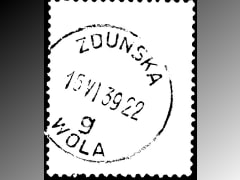
CountryScotland
Scotland
Town
Glasgow
Cacellation Date
Town Info
Glasgow is a port city on the River Clyde in Scotland's western Lowlands. It's famed for its Victorian and art nouveau architecture, a rich legacy of the city's 18th–20th-century prosperity due to trade and shipbuilding. Today it's a national cultural hub, home to institutions including the Scottish Opera, Scottish Ballet and National Theatre of Scotland, as well as acclaimed museums and a thriving music scene
Location
Perfins
Scotland
Town
Glasgow
Cacellation Date
Town Info
Glasgow is a port city on the River Clyde in Scotland's western Lowlands. It's famed for its Victorian and art nouveau architecture, a rich legacy of the city's 18th–20th-century prosperity due to trade and shipbuilding. Today it's a national cultural hub, home to institutions including the Scottish Opera, Scottish Ballet and National Theatre of Scotland, as well as acclaimed museums and a thriving music scene
Location
Perfins
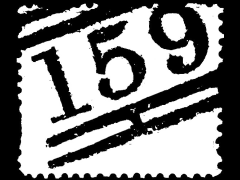
CountrySpain
Spain
Town
Madrid
Cacellation Date
3 Nov 1973
Town Info
Madrid, Spain's central capital, is a city of elegant boulevards and expansive, manicured parks such as the Buen Retiro. It’s renowned for its rich repositories of European art, including the Prado Museum’s works by Goya, Velázquez and other Spanish masters. The heart of old Hapsburg Madrid is the portico-lined Plaza Mayor, and nearby is the baroque Royal Palace and Armory, displaying historic weaponry.
Location
Black Page 14
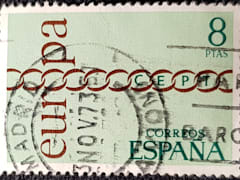
Spain
Town
Sitges
Cacellation Date
10 May 1951
Town Info
Sitges is a coastal town in Spain's Catalonia region, southwest of Barcelona, backed by the mountainous Parc Natural del Garraf. It's known for its Mediterranean beaches and seafront promenade lined with grand mansions. The compact old town and surrounding streets are filled with shops, restaurants, and many gay bars and nightclubs. The Maricel Museum and Cau Ferrat Museum showcase Catalan and other Spanish art.
Location
Black Page 14
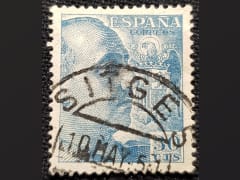
Spain
Town
Soria
Cacellation Date
4 Jun 1975
Town Info
Soria is a city in north-central Spain. It's known for its medieval streets and Romanesque architecture. The 12th-century Church of Santo Domingo has an intricately carved portico. The Museo Numantino’s archaeological collection includes artifacts from ancient cemeteries, painted ceramics and the bones of an extinct species of elephant. The sprawling Alameda de Cervantes park has an old hermitage and a bandstand.
Location
Black Page 14
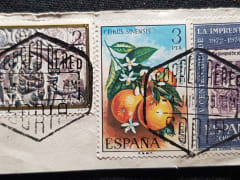
CountrySweden
Sweden
Town
Bromma 1
Cacellation Date
21 Jul 1980
Town Info
Bromma (Swedish pronunciation: [²brɔmːa])[1] is a borough (stadsdelsområde) in the western part of Stockholm, Sweden, forming part of the Stockholm Municipality. Bromma is primarily made up of the parish with the same name, and the parish of Västerled. The fourth largest airport in Sweden and the third largest of the airports close to Stockholm, the Stockholm Bromma Airport, was built in Bromma in 1936.
Location
Collection
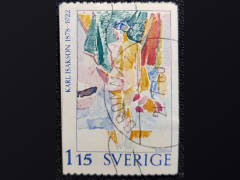
Sweden
Town
Gislaved
Cacellation Date
1 Feb 1960
Town Info
Gislaved is a locality and the seat of Gislaved Municipality, Jönköping County, Sweden with 10,231 inhabitants in 2017, out of a municipal total of nearly 30,000.
Location
Black Page 14

Sweden
Town
Goteborg 47
Cacellation Date
27 Sep 1994
Town Info
Gothenburg, a major city in Sweden, is situated off the Göta älv river on the country's west coast. An important seaport, it's known for its Dutch-style canals and leafy boulevards like the Avenyn, the city's main thoroughfare, lined with many cafes and shops. Liseberg is a popular amusement park with themed rides, performance venues and a landscaped sculpture garden.
Location
Cancel Strips
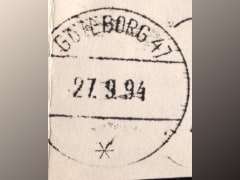
Sweden
Town
Gothenburg
Cacellation Date
15 May 1954
Town Info
Gothenburg, a major city in Sweden, is situated off the Göta älv river on the country's west coast. An important seaport, it's known for its Dutch-style canals and leafy boulevards like the Avenyn, the city's main thoroughfare, lined with many cafes and shops. Liseberg is a popular amusement park with themed rides, performance venues and a landscaped sculpture garden.
Location
Black Page 14
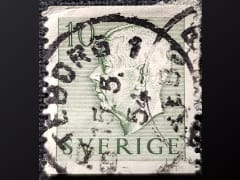
Sweden
Town
Klippan
Cacellation Date
1 Apr 1955
Town Info
Klippan is a locality and the seat of Klippan Municipality, Skåne County, Sweden with 8,116 inhabitants in 2010.
Location
Black Page 14
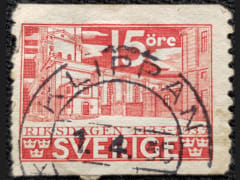
Sweden
Town
Molnbacka
Cacellation Date
17 Oct 1904
Town Info
Mölnbacka is a small town in the Nedre Ullerud district ( Nedre Ulleruds parish ) in Forshaga municipality . The resort is located a bit east of Nedre Ullerud's church outside Deje on the road to Molkom . Mölnbacka is situated between two lakes: Västra Örten and Lusten , and a rap which is then often called Mölnbacka river connects the lakes. The water flows out of Lusten through a fork around the island, where you find Pannkakan's nature reserve , and on to the Klarälven .
Location
Black Page 14
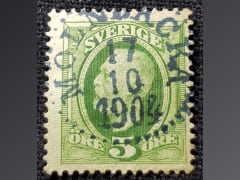
Sweden
Town
Stockholm 26
Cacellation Date
Town Info
Stockholm (Swedish pronunciation: [²stɔkː(h)ɔlm] (About this soundlisten))[8] is the capital of Sweden and the most populous urban area in the Nordic countries;[a] 965,232 people live in the municipality,[9] approximately 1.6 million in the urban area,[5] and 2.4 million in the metropolitan area.[10] The city stretches across fourteen islands where Lake Mälaren flows into the Baltic Sea. Outside the city to the east, and along the coast, is the island chain of the Stockholm archipelago. The area has been settled since the Stone Age, in the 6th millennium BC, and was founded as a city in 1252 by Swedish statesman Birger Jarl. It is also the county seat of Stockholm County. Stockholm is the cultural, media, political, and economic centre of Sweden. The Stockholm region alone accounts for over a third of the country's GDP,[11] and is among the top 10 regions in Europe by GDP per capita.[12] It is an important global city,[13][14] and the main centre for corporate headquarters in the Nordic region.[15] The city is home to some of Europe's top ranking universities, such as the Stockholm School of Economics, Karolinska Institute and Royal Institute of Technology (KTH).[16][17] It hosts the annual Nobel Prize ceremonies and banquet at the Stockholm Concert Hall and Stockholm City Hall. One of the city's most prized museums, the Vasa Museum, is the most visited non-art museum in Scandinavia.[18][19] The Stockholm metro, opened in 1950, is well known for the decor of its stations; it has been called the longest art gallery in the world.[20][21][22] Sweden's national football arena is located north of the city centre, in Solna. Ericsson Globe, the national indoor arena, is in the southern part of the city. The city was the host of the 1912 Summer Olympics, and hosted the equestrian portion of the 1956 Summer Olympics otherwise held in Melbourne, Victoria, Australia. Stockholm is the seat of the Swedish government and most of its agencies,[23] including the highest courts in the judiciary,[24][25] and the official residencies of the Swedish monarch and the Prime Minister. The government has its seat in the Rosenbad building, the Riksdag (Swedish parliament) is seated in the Parliament House, and the Prime Minister's residence is adjacent at Sager House.[26][27][28] Stockholm Palace is the official residence and principal workplace of the Swedish monarch, while Drottningholm Palace, a World Heritage Site on the outskirts of Stockholm, serves as the Royal Family's private residence.[29][30]
Location
Collection
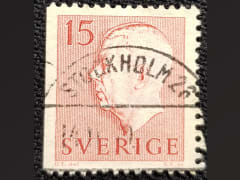
Sweden
Town
Westeras
Cacellation Date
18 Jun 1888
Town Info
Västerås is a city in central Sweden on the shore of Lake Mälaren in the province of Västmanland, 100 kilometres west of Stockholm. The city had a population of 119,372 in 2016, out of the municipal total of 150,000. Västerås is the seat of Västerås Municipality, the capital of Västmanland County and an episcopal see.
Location
Black Page 14
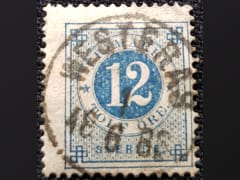
CountrySwitzerland
Switzerland
Town
Arosa
Cacellation Date
6 Jan 1988
Town Info
Arosa is an Alpine resort village in the Schanfigg Valley, in the Swiss canton of Graubünden. It’s known for its lakes, ski slopes and trails like the Squirrel Path. Boat-dotted Obersee Lake has a seasonal water display with fountains, lights and music. Untersee Lake has a sandy beach. West of Arosa is Weisshorn, a mountain peak accessible by cable car. It has views toward the city of Chur and Piz Bernina Peak.
Location
Black Page 14
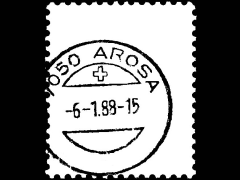
Switzerland
Town
Baden
Cacellation Date
16 Mar 1983
Town Info
The margraves of Baden originated from the House of Zähringen. Baden is named after the margraves' residence, Hohenbaden Castle [de] in Baden-Baden. Hermann II of Baden first claimed the title of Margrave of Baden in 1112. A united Margraviate of Baden existed from this time until 1535, when it was split into the two Margraviates of Baden-Durlach and Baden-Baden. Following a devastating fire in Baden-Baden in 1689, the capital was moved to Karlsruhe. The two parts were reunited in 1771 under Margrave Charles Frederick. The restored Margraviate of Baden was elevated to the status of electorate in 1803. In 1806, the Electorate of Baden, receiving territorial additions, became th e Grand Duchy of Baden. The Grand Duchy of Baden was a state within the German Empire until 1918, succeeded by the Republic of Baden within the Weimar Republic and Nazi Germany. From 1945 to 1952, South Baden and Württemberg-Baden were territories under French and American occupation, respectively. They were united with Württemberg-Hohenzollern to form the modern Federal State of Baden-Württemberg in 1952. Geography Baden lies in the southwest of Germany, with most of its major cities on the Upper Rhine Plain. Bounded by Lake Constance on the south and by the river Rhine on the south and west, the region of Baden stretches from the Linzgau, Lörrach and Freiburg im Breisgau to Karlsruhe and then on to Mannheim, leading to the Main and Tauber rivers. To its west lies the French historical region of Alsace, to its south Switzerland, the Palatinate to its northwest, Hesse to the north, and parts of Bavaria to the northeast. Its eastern border with the region of Württemberg runs from the Kraichgau through the Black Forest, and from some parts of the forest to the Rhine the distances become as low as 18 kilometres (11 mi) in the so-called "Wespentaille" near Gaggenau.
Location
Covers
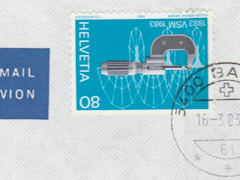
Switzerland
Town
Frauenfeld 1
Cacellation Date
13 Apr 1970
Town Info
Frauenfeld is the capital of the canton of Thurgau in Switzerland. The official language of Frauenfeld is German, but the main spoken language is the local variant of the Alemannic Swiss German dialect.
Location
Black Page 14
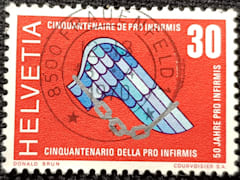
Switzerland
Town
Fribourg
Cacellation Date
14 Apr 1965
Town Info
Fribourg is the capital of the region of the same name in western Switzerland. In the medieval old city above the Sarine River, the Gothic Fribourg Cathedral has art nouveau stained glass and views from its bell tower. The nearby Espace Jean Tinguely–Niki de Saint Phalle displays the namesake 20th-century artists' sculpture. Occupying a Renaissance palace, the Musée d'Art et d'Histoire showcases medieval art
Location
Black Page 14
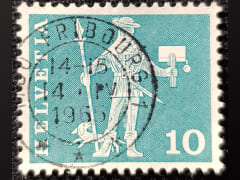
Switzerland
Town
Luzern 2
Cacellation Date
17 Apr 1970
Town Info
Lucerne, a compact city in Switzerland known for its preserved medieval architecture, sits amid snowcapped mountains on Lake Lucerne. Its colorful Altstadt (Old Town) is bordered on the north by 870m Museggmauer (Musegg Wall), a 14-century rampart. The covered Kapellbrücke (Chapel Bridge), built in 1333, links the Aldstadt to the Reuss River's right bank.
Location
Black Page 14
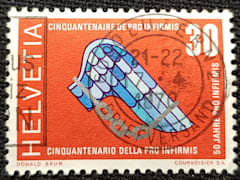
Switzerland
Town
Montreux 1
Cacellation Date
9 Mar 1970
Town Info
Montreux is a traditional resort town on Lake Geneva. Nestled between steep hills and the lakeside, it's known for its mild microclimate and the Montreux Jazz Festival, held in July. The town's promenade is lined with flowers, sculptures, Mediterranean trees and grand Belle Époque buildings. Offshore is a medieval island castle, Château de Chillon, with ramparts, formal halls and a chapel with 14th-century murals.
Location
Black Page 14
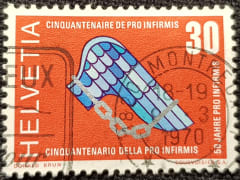
Switzerland
Town
Rorschach
Cacellation Date
26 Jun 1962
Town Info
Rorschach is a municipality, in the District of Rorschach in the canton of St. Gallen in Switzerland. It is on the south side of Lake Constance.
Location
Black Page 14
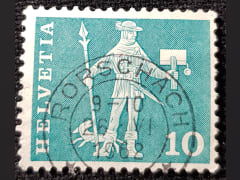
Switzerland
Town
St. Gallen 1
Cacellation Date
1964
Town Info
St. Gallen is a city south of Lake Constance (Bodensee), in northeastern Switzerland. It’s home to the Abbey of St. Gall, a monastery of various architectural styles including baroque. The complex includes a library with a rich collection of ancient books, and a twin-towered cathedral. Nearby, the Textile Museum details this important local trade. Many buildings in the old town have decorative bay windows.
Location
Black Page 14
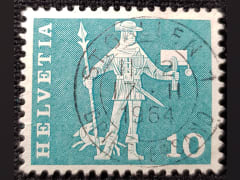
Switzerland
Town
Sulgen
Cacellation Date
23 Mar 1970
Town Info
Sulgen is a municipality in Weinfelden District in the canton of Thurgau in Switzerland.
Location
Black Page 14
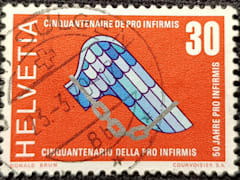
Switzerland
Town
Zofingen
Cacellation Date
29 Nov 1966
Town Info
Zofingen is a city in the canton of Aargau in Switzerland. It is the capital of the district of Zofingen. Zofingen is a walled city and home of an ancient monastic settlement.
Location
Black Page 14
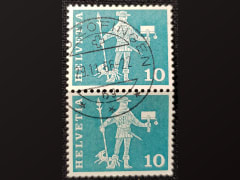
Switzerland
Town
Zurich 1
Cacellation Date
21 Feb 1946
Town Info
The city of Zurich, a global center for banking and finance, lies at the north end of Lake Zurich in northern Switzerland. The picturesque lanes of the central Altstadt (Old Town), on either side of the Limmat River, reflect its pre-medieval history. Waterfront promenades like the Limmatquai follow the river toward the 17th-century Rathaus (town hall).
Location
Black page 14
